Climate change affects us all. Everyone can play a part to contain the climate crisis. Our guide contains 50 tips from different areas of life that will help you to act responsibly. Be inspired by our suggestions in the four categories “buy & consume”, "drive & fly", "live & reside" and "work & earn". This is part 1 of our KfW Stories climate action guide with suggestions in the category “buy & consume”.
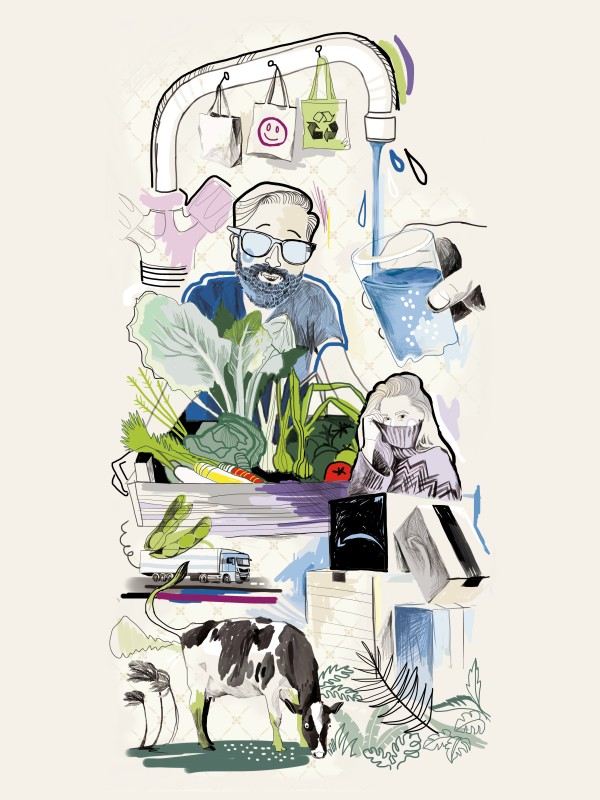
Eat less meat, buy regional products and avoid plastic packaging – this is how you protect the climate.
1. The big impact of less meat
According to a Worldwatch Institute calculation, livestock farming is responsible for 51 per cent of global greenhouse gas emissions – more than all cars, airplanes and power stations combined. Rainforests, which act as a carbon sink, are being cleared to grow soy for animal feed and for grazing land. In addition, cattle release large quantities of methane, which has an even greater impact than CO₂. This means that the climate cannot be saved without reducing meat consumption. Only 300 to 600 grams per week are considered healthy anyway. Average per capita consumption in Germany is currently more than 1.1 kg.
2. Different kinds of gifts
Does someone have a birthday coming up? Give the gift of time or get creative. The average European already owns more than around 10,000 things. That’s enough!
3. The butter off the bread
Food made from animal products does not have a good climate footprint. In addition to the production of beef, the production of dairy products is the main source of greenhouse gas emissions. The higher the fat content, the more milk and cows are needed. While one kilogram of butter holds 24 kilos of CO₂ emissions, margarine only accounts for around 1.4 kilograms.
4. Shopping without packaging
Think about the consequences of everything you buy. Pay attention to how much rubbish is left over! Every piece of packaging – whether plastic, cardboard, Tetra Pak or glass – represents energy input. Reusable bags, refillable packs or containers and paper bags that you bring from home are viable alternatives.
5. Shop yourself or have it delivered?
Online shopping would have an acceptable carbon footprint if the products you order online were brought to you directly in a delivery van with an optimised delivery process, accepted on the first try and not returned. But this is not a realistic scenario. Ideally, you take public transport to the city or shop in your own neighbourhood to support your local shops.
6. Seasonal, regional, biological!
Not every vegetable has the same climate footprint. A sample calculation for tomatoes: a kilogram that is organically farmed, regionally grown, seasonally harvested and transported by truck releases 35 grams of CO₂ – a conventionally produced kilogram from a greenhouse that is stored in a refrigerated warehouse and then transported by truck releases 9,315 grams.
7. Cherishing the old
Do things always have to be brand new, or can second-hand clothes and antiques also do the trick? Used devices can also be upgraded or repaired with new parts!
8. Collective consumption
Traditional models for sharing are libraries, flat sharing and car pooling. With the advent of Web 2.0 and the spread of smartphones, a huge sharing economy has emerged. Quintessence: nearly everything can be shared. Have a look at nebenan.de (for items including tools), foodsharing.de (food) or campspace.com (camping in gardens).
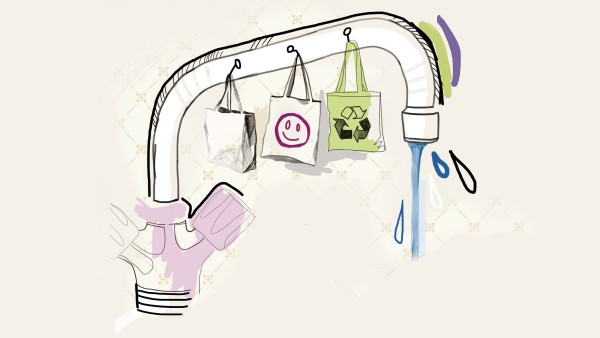
By stopping drinking water in plastic bottles from supermarkets and switching to tap water, you can mitigate climate change.
9. Water from the tap
For years the sale of non-alcoholic beverages in lightweight disposable plastic bottles (identifiable by the DPG symbol for a 25 cent deposit) has been increasing in Germany. A trend that negatively affects the climate. A total of 1.35 million tonnes of CO₂ could be avoided annually with refillable bottles. The positive effect on the climate is even greater if you completely dispense with supermarket water and switch to tap water.
10. Avoid ready-made products
Eat more unprocessed food instead of ready-made products. You’re not just doing your body a favour. You are also saving energy that is otherwise used for industrial production, transport and packaging.
11. Low-energy devices
When purchasing new devices, make sure that they are low-energy. To make the energy label more transparent for the consumer, the EU Parliament decided to return to the original efficiency classes A to G. The classes A+, A++ and A+++ will disappear. The labelling for washing machines, refrigerators, dishwashers, lights, TV and hi-fi equipment will be the first to change in 2021.
12. Say goodbye to fast fashion
Textile production has increased dramatically, mainly due to cheap petroleum-based synthetic fibre polyester. Every German buys an average of 60 new garments a year – and wears them only half as long as they did 15 years ago. The production process consumes a lot of water, and textile finishing and transport requires large amounts of energy. Why not just wear the clothes longer? If they are worn for two years instead of one, CO₂ emissions for clothing is reduced by 24 per cent per year.
13. Stop waste
Every year, 1.3 billion tonnes of food is thrown out instead of ending up on our plates – this is about a third of the food produced worldwide. CO₂ emissions amounting to 4.4 billion tonnes have therefore been released into the atmosphere “for nothing”. A total of 240 billion trees would be needed to compensate for this quantity of CO₂. Only buy what you really plan on eating.
14. Natural material instead of plastic
Pay attention to the material when shopping. There are now many manufacturing processes – also promoted by KfW – that use natural materials, for example for packaging or disposable tableware. Unlike plastic products, which contain petroleum and toxic additives, these products do not become hazardous waste but can be returned to the cycle as nutrients at the end of their useful life.
15. No palm oil
Cheap palm oil can now be found in lots and lots of food products. Rainforests are often cleared to make way for palm plantations – with corresponding effects on the global climate. Look at the label with the ingredients before you buy something.
Published on KfW Stories: 6 October 2020.

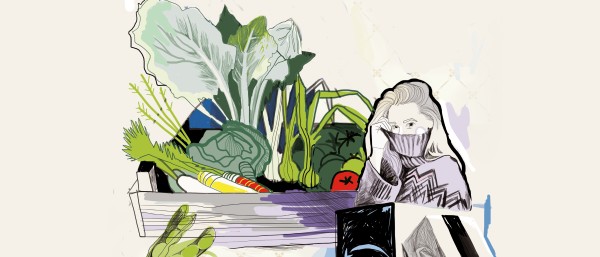
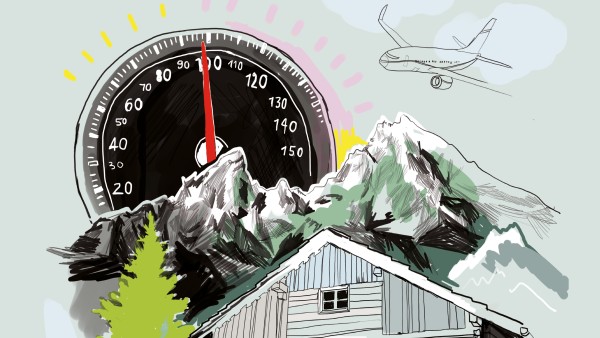

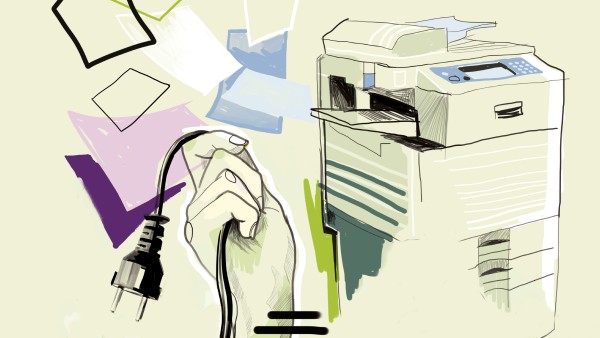
Data protection principles
If you click on one of the following icons, your data will be sent to the corresponding social network.
Privacy information